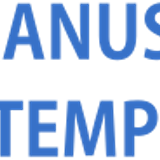SHALE GAS SWEET SPOT POTENTIAL OF TUNGKAL GRABEN, JAMBI SUB-BASIN SOUTH SUMATERA BASIN
Abstract
The Tungkal Graben is located in Jambi Sub-basin, the northern part of South Sumatera Basin. This basin is known as one of the largest hydrocarbons producing basin in Indonesia. There are several proven source rocks in the South Sumatera Basin. The paralic shales and coal horizon of Talangakar Formation (TAF) are known as primary source rock in this basin and considered as a reservoir of shale gas-bearing in Tungkal Graben Area as well. This study used surface geological data that was collected from the southern foot of Tiga Puluh Mountain as the outcrop analogy and subsurface data (existing well and seismic data) in Tungkal Graben Area. This study applied integrated methods including environmental deposition analysis, organic geochemistry analysis, petrophysical analysis, seismic interpretation, sweet spot delineation, and volumetric of gas in place (GIP) calculation. TAF observed both on the outcrop and well is transition deposit that consists of the dominance of shale and siltstone with interbedded of coal, sandstone, and limestone. Shale and siltstone of TAF have characteristic which is appropriate as a shale gas bearing, with sufficient organic content richness, suitable kerogen type, its maturity entering the early gas generation and proper brittleness index (BI). The sweet spot area is an area that has met the criteria for potential shale gas and determined by pay zone criteria. Depend on the criteria, Net to gross for shale gas is 0.158, early gas generation estimated at a depth of 10250 feet, and sweet spot area reaches 8.9 x 108 ft2. Thus, the total potential of shale gas resources from the calculation using the Ambrose method is 2.12 TCF.
Keywords
Full Text:
PDFReferences
Ambrose , R. J., Hartman, R., Diaz-Campos, M.,Akkutlu, I.Y., & Sondergeld, C.H. , 2012. Shale Gas-in-Place Calculations Part I: New Pore-Scale Considerations. SPE Journal, March.17(01).
Diessel, C. F. K., 1992. Coal Bearing Depositional. 1st ed.Berlin, Germany: Springer-Verlag.
Ginger, D. & Fielding, K., 2005. The petroleum systems and future potential of the South Sumatra basin. Jakarta, Indonesian Petroleum Association.
Hermiyanto, H., Ramli, . T. & Syamsir, 2015. Rekomendasi Wilayah Kerja Migas Non Konvensional Sub Cekungan Jambi., Bandung: Centre of Geological Survey, Geological Agency.
Jarvie, D., 2008. Unconventional Shale Resource Plays: Shale-Gas and Shale-Oil Opportunities. Texas: Word- wide Geochemistry.
Perez, R. & Marfurt, K., 2013. Calibration of Brittleness to Elastic Rock Properties via Mineralogy Logs in Unconventional Reservoirs. Cartagena, Colombia, AAPG International Conference and Exhibition.
Wang, F. P. & Gale , J. F. W., 2009. Screening criteria for shale-gas systems. Gulf Coast Association of Geological Societies Transactions, Volume 59, pp. 779-793.
DOI: https://doi.org/10.29017/SCOG.42.3.397

This work is licensed under a Creative Commons Attribution-NonCommercial-NoDerivatives 4.0 International License.






